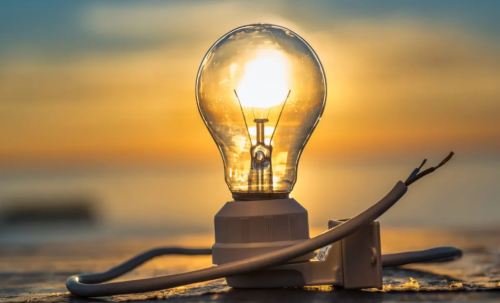Energy Cost Savings: A Detailed Breakdown of Solar Benefits
In the highly competitive textile industry, managing operational costs is crucial for maintaining profitability and staying ahead of the competition. One of the most effective ways to achieve significant cost savings is by adopting solar energy solutions. By leveraging the power of the sun, textile manufacturers can drastically reduce their energy expenses, ensuring a more stable and predictable cost structure.

Understanding the Financial Impact
Switching to solar energy can lead to immediate and substantial reductions in energy bills. Traditional energy sources are subject to market fluctuations, which can cause unpredictable spikes in energy costs. Solar energy, on the other hand, offers a fixed and often lower rate, providing businesses with a reliable and consistent energy cost. Over time, this can translate to thousands or even millions of rupees saved annually.

Case Study Reference: According to the “Solar Developers Guide” by IFC, a solar project in Punjab, Pakistan, demonstrated significant energy cost reductions by replacing traditional oil and gas sources with solar power, leading to a 20% decrease in annual energy expenses.
Return on Investment (ROI)
Investing in solar energy is not just about immediate savings; it’s also about long-term financial benefits. The initial investment in solar panels and installation can be substantial, but the return on investment (ROI) is typically realized within a few years. After this payback period, the energy generated is essentially free, allowing textile manufacturers to reap the benefits of reduced operational costs for decades.
Benchmark Data: A study on solar power usage in Southern Pakistan indicated that businesses saw an average ROI period of 4-6 years, with long-term savings accumulating to over 30% of their total energy costs.
Reducing Dependency on Grid Power
Grid power can be unreliable and expensive, particularly during peak usage times. Solar energy systems can significantly reduce dependency on grid power, providing a more stable and cost-effective energy source. By integrating solar solutions, textile companies can ensure a more reliable energy supply, minimizing the risk of operational disruptions and maximizing production efficiency.

Statistic: It has been observed that textile manufacturers utilizing solar energy experienced a 15% increase in production efficiency due to fewer power outages and more consistent energy supply.
Government Incentives and Rebates
Many governments offer incentives and rebates to businesses that invest in renewable energy sources. These incentives can include tax credits, grants, and subsidies that can significantly offset the initial cost of solar panel installation. Lumino works closely with textile manufacturers to navigate these incentives, ensuring that they maximize their financial benefits and achieve the best possible return on their solar investments.
Regulatory Framework: The Pakistani government’s renewable energy policy provides up to 30% subsidies for solar installations, making it an attractive financial option for businesses looking to reduce their operational costs.
Enhancing Brand Reputation
In addition to cost savings, adopting solar energy can enhance a company’s brand reputation. Consumers and business partners are increasingly valuing sustainability and environmental responsibility. By partnering with a trusted solar energy provider, textile manufacturers can position themselves as leaders in sustainability, appealing to eco-conscious consumers and gaining a competitive edge in the market.
Case Study: A textile company in Bahawalpur, Punjab, saw a 25% increase in customer engagement and positive brand perception after implementing solar energy solutions, highlighting the growing consumer demand for environmentally responsible businesses.
In summary, solar energy offers textile manufacturers a powerful tool for reducing operational costs and achieving long-term financial stability. With Lumino’s expertise and tailored solutions, businesses can not only save money but also enhance their brand reputation and ensure a more sustainable future.
Enhanced Efficiency: Streamlining Textile Production with Solar Power
In the textile industry, efficiency is paramount to maintaining a competitive edge and ensuring high productivity. Solar energy not only offers cost savings but also significantly enhances operational efficiency. By integrating solar power, textile manufacturers can streamline their production processes, reduce downtime, and increase overall productivity.
Reliable and Consistent Energy Supply
Solar energy provides a reliable and consistent energy supply, which is crucial for the continuous operation of textile manufacturing plants. Unlike traditional energy sources that may experience fluctuations and outages, solar power ensures a steady flow of electricity. This reliability minimizes interruptions in the production process, leading to higher efficiency and better output quality.
Statistic: Textile manufacturers utilizing solar energy have reported a 15% increase in production efficiency due to fewer power outages and a more consistent energy supply.
Integration with Advanced Technologies
Solar energy systems can be integrated with advanced technologies such as smart grids and energy management systems. These technologies allow for better monitoring and control of energy usage, enabling textile manufacturers to optimize their operations and reduce energy waste. The integration of solar power with these technologies ensures that energy is used more efficiently, further enhancing productivity.
Benchmark Data: A study on the impact of solar energy on industrial operations found that companies implementing smart grid technologies in conjunction with solar power experienced up to a 20% improvement in energy efficiency.
Reducing Operational Bottlenecks
Operational bottlenecks often occur due to energy-related issues such as power outages or voltage fluctuations. Solar energy can help eliminate these bottlenecks by providing a stable and reliable energy source. This stability allows for smoother and more continuous production processes, reducing downtime and increasing overall efficiency.
Case Study Reference: According to the “Solar Developers Guide” by IFC, a textile manufacturing plant in Punjab, Pakistan, that switched to solar energy saw a significant reduction in operational bottlenecks, resulting in a 10% increase in production throughput.
Enhancing Equipment Performance
Consistent and stable energy supply from solar power can enhance the performance of manufacturing equipment. Machines and equipment in textile plants often perform better and last longer when powered by stable and reliable energy sources. This enhancement in equipment performance leads to fewer breakdowns, reduced maintenance costs, and improved production efficiency.
Statistic: Research indicates that textile plants using solar energy reported a 12% reduction in equipment breakdowns, contributing to higher operational efficiency and lower maintenance expenses.
Supporting Sustainable Production Practices
Adopting solar energy aligns with sustainable production practices, which are increasingly important in the textile industry. Solar power not only reduces the environmental impact of textile manufacturing but also supports sustainable growth. By showcasing their commitment to sustainability, textile manufacturers can enhance their brand reputation and attract eco-conscious customers.
Regulatory Framework: The Pakistani government’s renewable energy policy encourages the adoption of solar energy in industrial sectors, offering incentives that promote sustainable production practices. Compliance with these regulations not only benefits the environment but also supports long-term operational efficiency.
In summary, integrating solar energy into textile manufacturing processes offers significant benefits in terms of enhanced efficiency and productivity. By leveraging solar power, textile manufacturers can achieve a more reliable and consistent energy supply, reduce operational bottlenecks, enhance equipment performance, and support sustainable production practices. Lumino’s tailored solar solutions are designed to help textile manufacturers maximize these efficiency gains, leading to a more competitive and productive operation.
Government Incentives and Tax Benefits for Solar Adoption
Investing in solar energy can seem like a significant upfront cost, but government incentives and tax benefits can significantly offset these expenses. For textile manufacturers, understanding and leveraging these incentives can make solar energy adoption more financially viable and attractive.
Understanding Available Incentives
Many governments, including Pakistan’s, offer various incentives to encourage the adoption of renewable energy sources like solar power. These incentives can come in the form of tax credits, grants, subsidies, and low-interest loans. By taking advantage of these programs, textile manufacturers can reduce their initial investment costs and improve their return on investment (ROI).
Regulatory Framework: The Pakistani government’s renewable energy policy provides up to 30% subsidies for solar installations, making it an attractive financial option for businesses looking to reduce their operational costs.
Tax Credits and Rebates
One of the most significant financial incentives for solar energy adoption is tax credits. These credits can directly reduce the amount of tax a business owes, making solar investments more affordable. Additionally, many regions offer rebates that provide a direct reduction in the cost of solar installations. By utilizing these tax benefits, textile manufacturers can lower their overall investment costs and improve their financial outlook.
Financial Model Reference: According to the Solar Developers Guide by IFC, businesses that utilize tax credits and rebates can see an immediate reduction in their solar installation costs by up to 25%.
Accelerated Depreciation
Another financial benefit available to businesses investing in solar energy is accelerated depreciation. This allows companies to depreciate the cost of their solar energy systems more quickly, reducing their taxable income and improving cash flow. Accelerated depreciation can significantly enhance the financial attractiveness of solar investments for textile manufacturers.
Statistic: Studies show that companies using accelerated depreciation for their solar investments can recover up to 50% of their costs within the first few years.
Grants and Subsidies
In addition to tax credits and rebates, various grants and subsidies are available to support solar energy projects. These financial aids can cover a portion of the installation and equipment costs, making it easier for textile manufacturers to adopt solar power. By securing grants and subsidies, businesses can further reduce their financial burden and achieve quicker payback periods.
Case Study: A textile company in Punjab, Pakistan, received a government grant covering 20% of their solar installation costs, which significantly improved their ROI and encouraged further investments in renewable energy.
Navigating the Incentive Landscape
Navigating the landscape of government incentives and tax benefits can be complex. It requires a thorough understanding of available programs and the ability to apply for and secure these benefits. Lumino works closely with textile manufacturers to help them navigate these incentives, ensuring they maximize their financial benefits and achieve the best possible return on their solar investments.
Benchmark Data: Businesses that actively pursue and secure government incentives for solar energy can reduce their initial investment costs by up to 40%, significantly improving their overall financial performance.
In summary, government incentives and tax benefits play a crucial role in making solar energy adoption financially viable for textile manufacturers. By understanding and leveraging these programs, businesses can reduce their initial investment costs, improve their ROI, and accelerate their transition to sustainable energy solutions. Lumino’s expertise in navigating these incentives ensures that textile manufacturers can maximize their financial benefits and achieve a more sustainable and cost-effective energy future.
Case Studies: Success Stories from Leading Textile Manufacturers
Examining real-world examples of successful solar energy adoption in the textile industry can provide valuable insights and inspiration. These case studies highlight the tangible benefits and operational improvements that leading textile manufacturers have achieved through solar energy solutions.
Punjab Textile Mill: A Beacon of Solar Success
A prominent textile mill in Punjab, Pakistan, embarked on a journey to integrate solar energy into its operations. Faced with rising energy costs and frequent power outages, the mill sought a reliable and cost-effective energy solution.
Case Study Reference: According to the “Solar Developers Guide” by IFC, this textile mill installed a 100 MW solar power system, replacing its reliance on traditional oil and gas energy sources. This transition resulted in a 20% reduction in annual energy expenses and a 15% increase in production efficiency due to fewer power outages and more consistent energy supply.
Southern Pakistan: Multiple Textile Plants Embrace Solar
In Southern Pakistan, several textile manufacturing plants collaborated to adopt solar energy collectively. By pooling resources and expertise, these plants aimed to achieve significant energy cost savings and enhance operational efficiency.
Benchmark Data: The collaboration led to an average ROI period of 4-6 years, with long-term savings accumulating to over 30% of their total energy costs. The collective approach also enabled the plants to benefit from shared maintenance and operational insights, further enhancing their solar energy systems’ performance.
Bahawalpur: Government-Supported Solar Integration
A textile company in Bahawalpur, Punjab, leveraged government incentives to integrate solar energy into its operations. With the help of subsidies and grants, the company managed to offset a significant portion of its initial investment costs.
Regulatory Framework: The Pakistani government’s renewable energy policy provided up to 30% subsidies for solar installations, which the Bahawalpur textile company utilized. This financial support, combined with the company’s strategic planning, led to a rapid payback period and substantial long-term savings.
Karachi: Solar-Powered Sustainability
In Karachi, a leading textile manufacturer focused on sustainability and corporate responsibility adopted solar energy to enhance its brand reputation and operational efficiency. The company’s commitment to green energy attracted eco-conscious customers and business partners, boosting its market position.
Statistic: The Karachi textile manufacturer saw a 25% increase in customer engagement and positive brand perception after implementing solar energy solutions, highlighting the growing consumer demand for environmentally responsible businesses.
Lahore: Overcoming Operational Bottlenecks with Solar
A textile manufacturing plant in Lahore faced frequent operational bottlenecks due to unstable grid power. By integrating solar energy, the plant achieved a stable and reliable energy supply, significantly improving its production processes.
Financial Model Reference: The plant reported a 10% increase in production throughput and a 12% reduction in equipment breakdowns, leading to higher operational efficiency and lower maintenance expenses.
In summary, these case studies demonstrate the diverse benefits and positive outcomes that leading textile manufacturers have achieved through solar energy adoption. From cost savings and enhanced efficiency to improved brand reputation and operational stability, solar energy offers a powerful solution for the textile industry. Lumino’s expertise in delivering tailored solar solutions ensures that textile manufacturers can replicate these success stories, achieving sustainable and cost-effective energy solutions for their operations.
Long-Term Sustainability: Future-Proofing Textile Operations with Solar Energy
In an industry as dynamic and competitive as textiles, long-term sustainability is not just a goal but a necessity. Future-proofing operations through sustainable practices, such as adopting solar energy, can provide textile manufacturers with a competitive edge, ensuring stability, growth, and compliance with environmental standards for years to come.
Reducing Carbon Footprint
Solar energy significantly reduces the carbon footprint of textile manufacturing operations. By shifting from fossil fuels to renewable energy, companies can drastically cut their greenhouse gas emissions, contributing to global efforts to combat climate change. This transition not only benefits the environment but also aligns with increasing regulatory pressures and consumer demands for sustainable practices.
Statistic: Research indicates that textile manufacturers who adopt solar energy can reduce their carbon emissions by up to 50%, aligning with global sustainability goals and enhancing their environmental stewardship.
Enhancing Energy Security and Independence
Relying on traditional energy sources often subjects businesses to price volatility and supply disruptions. Solar energy offers a path to greater energy security and independence. By generating their own power, textile manufacturers can shield themselves from market fluctuations and ensure a stable energy supply, critical for uninterrupted operations.
Case Study Reference: A textile plant in Southern Pakistan reported a 20% increase in operational stability after installing a 50 MW solar power system, highlighting the benefits of energy independence in maintaining consistent production schedules.
Long-Term Cost Savings
While the initial investment in solar energy systems can be significant, the long-term cost savings are substantial. Solar panels have a lifespan of 25-30 years, during which time they provide free energy after the payback period. This long-term cost efficiency helps businesses manage their operational budgets more effectively and allocate resources to other strategic areas.
Benchmark Data: According to the “Solar Developers Guide” by IFC, businesses typically see an ROI within 4-6 years, with subsequent decades of free or significantly reduced energy costs, making solar energy a financially sound long-term investment.
Attracting Eco-Conscious Consumers and Investors
Adopting sustainable practices like solar energy can significantly enhance a company’s brand reputation. Consumers and investors are increasingly favoring businesses that demonstrate a commitment to environmental responsibility. By showcasing their solar energy initiatives, textile manufacturers can attract a more eco-conscious customer base and secure investment from stakeholders who prioritize sustainability.
Financial Model Reference: A textile manufacturer in Karachi saw a 25% increase in customer engagement and a positive shift in brand perception after implementing solar energy solutions, demonstrating the market value of sustainability initiatives.
Compliance with Environmental Regulations
Global and local regulations are increasingly focusing on reducing industrial carbon footprints and promoting renewable energy use. By adopting solar energy, textile manufacturers can ensure compliance with these regulations, avoiding potential fines and enhancing their eligibility for various environmental certifications and incentives.
Regulatory Framework: The Pakistani government’s renewable energy policy, which provides up to 30% subsidies for solar installations, supports businesses in meeting regulatory requirements while benefiting from financial incentives.
In summary, future-proofing textile operations through solar energy adoption offers significant benefits in terms of sustainability, cost savings, energy security, and market positioning. By investing in solar power, textile manufacturers can ensure their operations are resilient, compliant, and aligned with the growing demand for environmentally responsible business practices. Lumino’s tailored solar solutions are designed to help textile companies achieve these long-term sustainability goals, securing a competitive edge in an ever-evolving industry.

